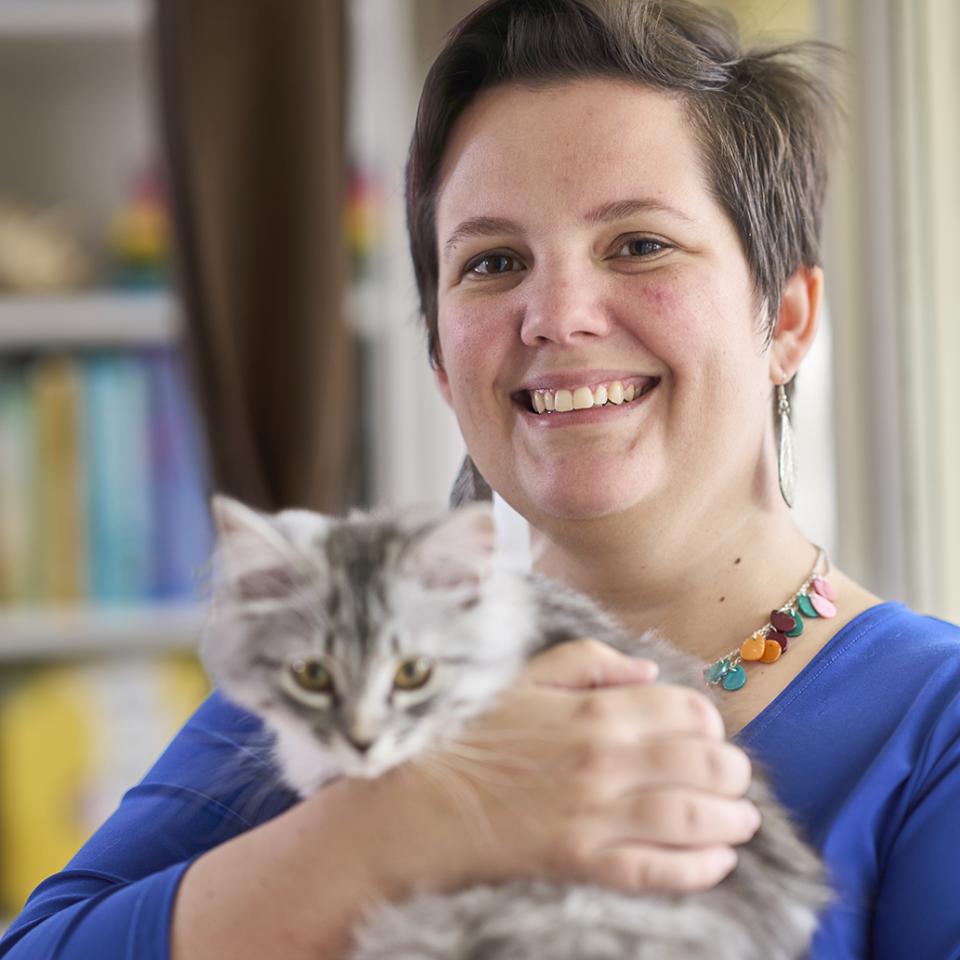Was It a Cat I Saw? is a lively and unusual children’s picture book about a young girl who helps a friend find a missing pet … Wait, did you catch that?
Read the title again. Now try reading it backwards.
See it?
The title is a palindrome – a word or phrase that reads the same back to front – and it is one of many used throughout the first published children’s picture book by Laura (Herdman) Bontje, Artsci’11.
“I have just always loved wordplay of all kinds and the mechanics of language,” explains Ms. Bontje from her home in London, Ont. “My mom’s a really big reader and my dad gave me this love for puns and dad jokes – all the ways we can use words to entertain really fascinate me.”
Now an editor, Ms. Bontje developed a love of wordplay at an early age when she discovered that “bookkeeper” is one of the only English words that has three sets of double letters in a row. Her first encounter with a palindrome involved Napoleon: Able was I ere I saw Elba. She likely didn’t have much knowledge about the French emperor at that age: the wordplay was what fascinated her. Years later, when she was completing a degree in English at Queen’s, she was again drawn to linguistics.
In her third year, she volunteered for a linguistics lab that was testing kids’ pronunciation of nonsense words. Researchers noticed that they would read them using the same rules of English even though the words were made up. It demonstrated, she says, that we intuitively understand certain conventions of our language.
Telling a story with palindromes was Ms. Bontje’s original idea for Was It a Cat I Saw? – an idea that began during the pandemic after she had been laid off from her job and found herself at home with her two kids. One day the name Hannah popped into her mind and she recalls thinking, “Hey, that’s kind of fun. That’s a palindrome.”
Her original concept was to write an entire book, line for line, that could be read forwards and backwards. She struggled with that concept, she admits, and eventually shifted gears to having Hannah speak in palindromes. “From there, everything just fell into place.”
When a friend’s cat, Otto, goes missing, Hannah and her friend head off on an adventure around their neighbourhood to find him. Italian artist Emma Lidia Squillari’s beautiful watercolour illustrations and a notable lack of technology give the story a timeless quality, while Ms. Bontje’s narrative weaves a tale about exploration and discovery around palindromes, which are highlighted throughout.
By focusing on palindromes, Ms. Bontje’s picture book highlights creativity and the “infinite number of things we can do with language. It’s an opportunity to introduce children to something they may not have encountered before,” she says. “Maybe the average kid doesn’t notice [palindromes], but I know somewhere out there, there’s a kid sitting in a classroom who has discovered palindromes for the first time and thinks they’re the coolest thing.”
Was It a Cat I Saw? is available now from Amicus Ink.


